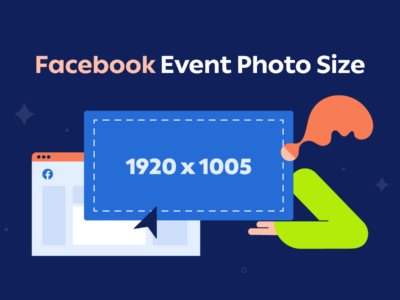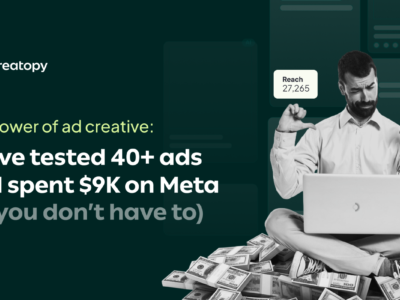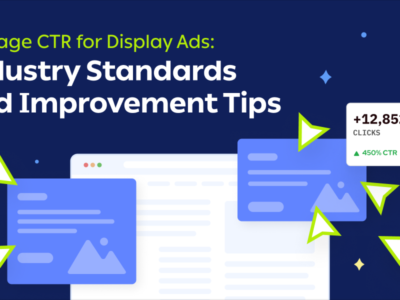A banner ad without a call to action is an open loop.
Your customer will see the ad, but is highly unlikely to take an action unless prompted to.
That’s why the call to action is essential for any good banner ad. It determines if the user takes the next step down the conversion funnel or if he moves on.
If you want users to do anything, you have to specifically ask them to do it.
1. How calls to action work
Calls to action are directly connected to your goals.
They could be about buying, downloading, requesting information or making a reservation, for example. And it’s what your banner ad should ask of your target audience.
We talked earlier about how the value proposition answers the question “What’s in it for me?”. With that, it builds up an enticing offer for your prospect. But the value proposition doesn’t say what to do next in order to enjoy the described benefits.
Here is where the call to action comes in.
Calls to action make the link between your banner ad and your conversion rate. They point your users in the right direction, down the conversion funnel with the exact action they need to take.
2. How to create a good call to action
irst, ignore advice like: “Green increases conversions.” Or like “People associate red with danger, so stay away from it”. Those are tricks that won’t add any significant value for your customers.
A good call to action address your users’ needs while providing meaningful, relevant information. It should make it crystal clear for users what they will get after they click.
It also blends in perfectly with with the rest of the messaging on your banner ad and your landing page.
Start by outlining the desired action. What do you want your users to do?
Second – outline user benefits or a strong value proposition. With these, you get your users’ attention while giving them reasons why they should take the next step and click that button. Also, it helps users decide if they follow through or if they abandon.
Here, it is best to be as specific as possible.
For example, if you’re offering advertising services, go beyond the generic “reach more customers” to something more accurate: “get 5x more qualified leads”.
Third – consider the three main elements that define the call to action: text, design and placement.
A good call to action gets all those in sync.
3. Call to action text
The call to action text is very important as it gives your audience an idea about what’s going to happen next. As a general rule, it should describe exactly what your visitors will get once they click. It should also align with the benefits promised earlier.
Here are a few tips for writing a compelling call to action text.
A. Be specific.
The standard “click here” won’t pull in many people. Use words that are specific to your business to persuade your visitors to take the next step.
If you have an e-commerce website, use words like “BUY” or “SHOP”.
If you want more information from your visitors, use phrases like “fill in the form”.
B. Use clear, actionable language.
If your visitors need to stop and think about it, you’ve lost them. The more complicated the language, the smaller the chances of an actual click. Be brief and speak your users’ language.
Make the call to action clear and easy to understand.
Don’t be vague, don’t ask shyly and be as straightforward as possible – your text should make people want to act.
C. Keep it in context:
In order to be effective, the call to action must fit in naturally with the rest of the messaging on your ad. A call to action that is too far off from the value proposition will detract your users from taking action. Choose a message that follows naturally from the value proposition that you’ve put forth.
For example, if you’re advertising an ebook, it doesn’t make any sense to push your customers into buying something. That’s not what you’ve talked to your audience about.
The call to action should invite users to download a copy or to read more about your piece.
4. HOW TO DESIGN A GREAT Call To Action
a. Shape:
You want people to click your call to action, right? Well, then make it stand out, clickable and button like.
Using button-like shapes will ensure that your users recognize what they need to do next: click.
b. Use a good color:
Like we mentioned earlier, there are no standard rules like green gets more clicks, red drives away visitors.
It’s all about the right combination of background and foreground colors. Choose a color that creates good contrast and makes your call to action stand out from the rest of your design.
c. Size matters:
Important elements in your design should be underlined accordingly.
Make sure that the call to action doesn’t get lost, that it is big enough to draw attention and get noticed, yet not too big to compete with other elements.
d. Use a good font size:
Use a typeface and a font size that can be easily read on your call to action button. If the text is too small or if it’s hard to read in any way, your users might not click to follow through.
5. Call to action placement:
Make sure that there aren’t other distracting elements around your call to action.
Also, a clean, ordered banner design conveys more trust.
Bonus tips :
URGENCY: You don’t want your users to postpone, you want them to take the next step right then and there. That’s why creating a sense of urgency might work and encourage your visitors to act right away.
You can create urgency using words like “NOW” or “TODAY”.
Remember, there are no rules for this. Also, urgency might not work as well for high priced items, but it could work wonders for low commitment actions such as signing up.
USE PERSONALIZATION: Standard “download”, “add to cart” or “click here” might be perceived them as boring. They’re overly used and hence, may be ignored.
To drive more attention, add a personal touch to your call to action. You can easily achieve this by using personal pronouns like “me” (“sign me up”), “you”, “yours” to add a personal, human touch to your calls to action.
6. What you should never ever do
As a rule of thumb, don’t promise something you can’t deliver. This should be a no brainer, but it happens often in advertising and in marketing. Not only will you cheat your users’ expectations, but you also lose their trust.
What’s more, an unsatisfied user is 13 times more likely to complain and spread the bad news than a satisfied customer. Keep that in mind when you’re tempted to promise something that’s not really there.
If there’s too big a difference between the landing page and what your banner advertises in terms of design, visuals and content, you won’t see good results.
Try as much as possible to create a consistent look between your banner ad and your landing page.
Also, keep the messaging coherent.
Don’t abuse urgency. Limited time offerings and limited quantity work, there’s no doubt about it. But don’t overuse it or use it only to push your customers forward.
Think of it this way.
Would you still consider buying from a store that offers 20% off for 3 days only and it’s there for a week?
Chapter 1: Advertise For Your Target Audience
Chapter 2: The Anatomy Of A Banner Ad
Chapter 3: Design Principles When Creating Banner Ads
Chapter 4: What Visual Elements Use in Banner Ads
Chapter 5: How To Define Value Proposition
Chapter 6: How Important are Colors in Banner Ads?








